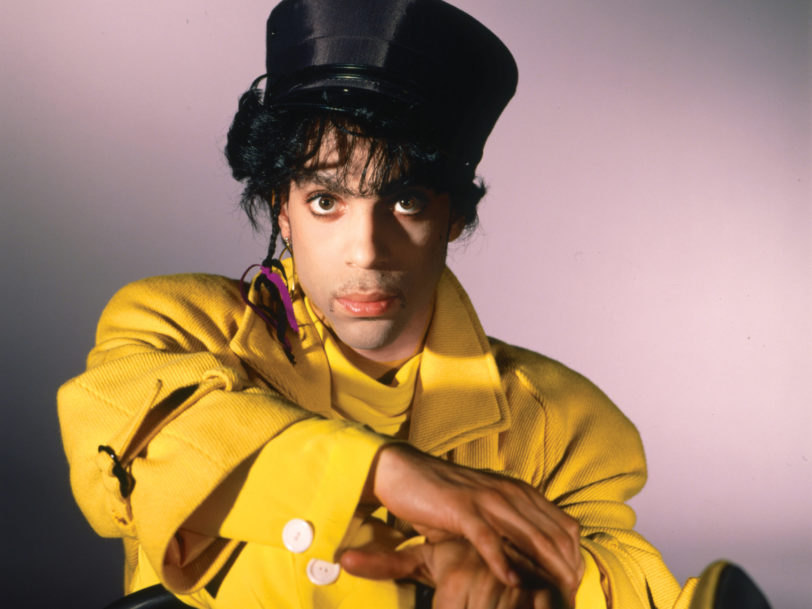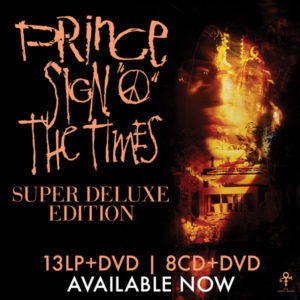In the year that led up to his 1987 album, Sign O’ The Times, Prince released a flop movie (Under The Cherry Moon) and a critically acclaimed album whose sales somehow fell short of expectations (Parade). He also suffered the heartbreak of a failed engagement with Susannah Melvoin, twin sister of one of his closest collaborators, Revolution guitarist Wendy Melvoin. Compounding that loss, Prince sacked The Revolution themselves, forever saying goodbye to the group that had starred alongside him in Purple Rain and helped him reach some of his greatest artistic heights. A string of unreleased albums – Dream Factory, Camille, Crystal Ball – along with an ever-growing pile of discarded songs, found themselves locked in The Vault. Endlessly creative in the face of turmoil, however, Prince was searching for something that could take him to the next level. After a tumultuous year, he finally found it.
“He wanted to wow people”
“1986 was a crazy year for Prince,” Duane Tudahl, Senior Researcher for the Prince Estate Archives, tells Dig! “He had just come off a project that didn’t do as well as he hoped, and he wanted to wow people.”
Any of those unreleased albums would have achieved that goal – and then some: Dream Factory, his most collaborative project with The Revolution, sounded like a mind-bending carnival captured on record. Camille, credited to an androgynous alter ego, revelled in a unique squelchy funk that sought to distract from his losses. Crystal Ball, an ambitious triple-album that his record label, Warner Bros, felt was too costly to release, contained some of the most complex material Prince ever committed to tape.
“Prince didn’t do many interviews – he spoke through his music,” Tudahl says. “The progression between all these things tells you where he was at the time.” As the Super Deluxe Edition of Sign O’ The Times reveals, the period ended not just with the Sign O’ The Times album itself, but an unreleased song called Wally. Exposing just how deeply he had grieved throughout this astoundingly fertile period, Prince erased his first recording of the song, feeling it was too emotionally raw for anyone else to hear. “He was basically saying, to himself and the world, ‘I’m erasing the past,’” Tudahl says. “He’s saying, ‘I’m erasing the contributions of The Revolution, and I’m going to move on.’”
Now he had to show everyone he could do it without the band that had become such a part of his life – and work. “Not only did he show them,” Tudahl says, “he gave them what is possibly his best album ever.”
From Dream Factory through Camille and Crystal Ball, to the unimpeachable magnificence of Sign O’ The Times, here is how Prince created his masterpiece.

Dream Factory
Configured with several different tracklists through the spring and summer of 1986, Dream Factory found Prince having so much fun in the studio that it expanded from an 11-track record to an 18-track double-album. “It’s sort of: ‘This is where I am with a band. This is where we’re going to go. And this is the fun we’re having,’” Tudahl says. Somewhat consolidating Parade’s abstract funk and the psychedelic pop-rock of that album’s predecessor, Around The World In A Day, Dream Factory careens from the ethereal whimsy of All My Dreams to the avant-garde soundscapes of Crystal Ball and delicate instrumental passages, Visions and Colors – solo pieces recorded by Lisa Coleman and Wendy Melvoin, respectively.
“Dream Factory really was a Prince And The Revolution album,” Tudahl says. Wendy and Lisa’s input is all over the project, with songs like Strange Relationship and Witness 4 The Prosecution boasting sitar effects (courtesy of the Fairlight sampler) and vocal arrangements that the pair came up with after Prince handed them ideas to flesh out. “For somebody like Prince, who was such a controlling guy about his music, to say to Wendy or Lisa, ‘Look, hand me some lightning in a bottle’ – and they do it – it’s a testament to his respect and how much he relied on them.”
Feeling they deserved more credit for their input, tensions grew between Prince and the band. “I think he realised that they could leave him, so he wanted to leave them before they left him,” Tudahl says of The Revolution’s dissolution. “It was pre-emptive.” Prince’s struggling relationship with Susannah also put pressure on his creative partnership with Wendy and Lisa: “They were fighting with him, but they were fighting to stay with him,” Tudahl says. “But, looking back, Prince would want to hurt somebody before they hurt him: ‘We’ll break up, but we’re gonna break up on my terms.’”
Though Prince would later remove their additions and re-record overdubs of his own, the fact that songs like Strange Relationship, The Ballad Of Dorothy Parker, Starfish And Coffee and Sign O’ The Times itself made it all the way through to the Sign O’ The Times album speaks to how strong the Dream Factory material was. But when Prince broke up the band, the album was shelved, and with it any opportunity for The Revolution to receive the goodbye they deserved.
Must hear: Visions/Colors
Tudahl: “These songs reveal how much he trusted Wendy and Lisa. He’s allowing them to not only do something on their own, but he starts Dream Factory with Visions. He said, ‘You know what? Lisa, you’re setting the tone on this.’ He wasn’t even in the studio when she did it. It was her and engineer Susan Rogers. That speaks volumes about the trust and the project. To hear Visions and Colors, which is Wendy just sitting there playing guitar – and she’s amazing at it – gives a lot of insight into what he was thinking.”





